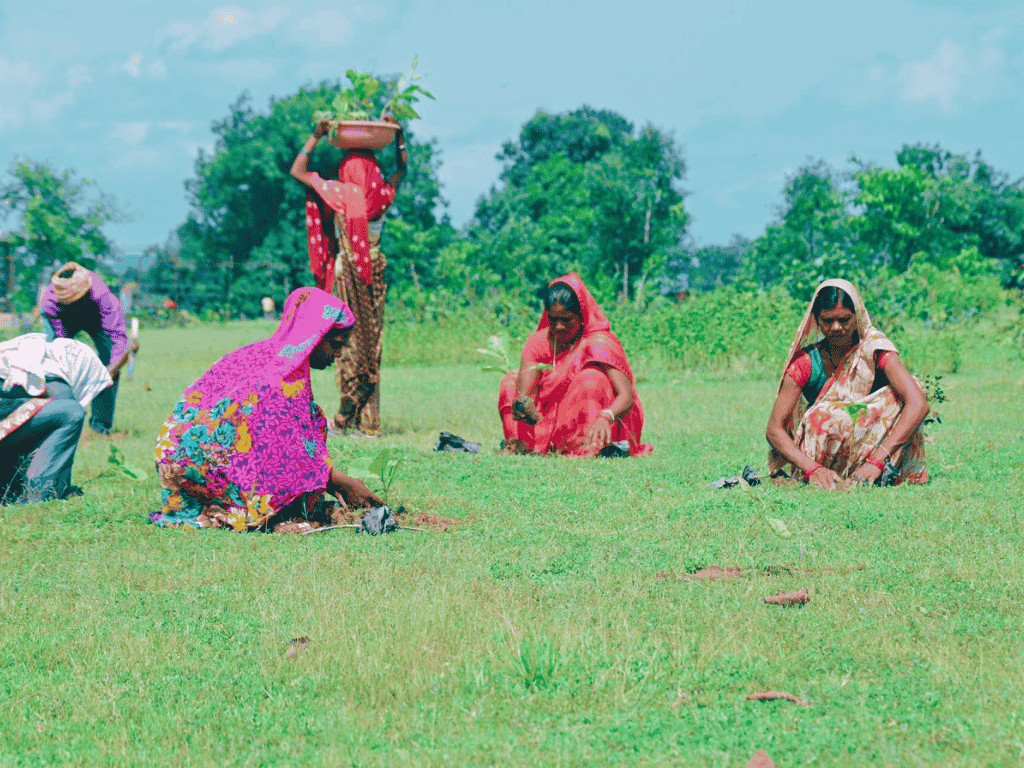It was an ordinary day in a not-so-ordinary village, where the fields stretched beyond the horizon, and the air, unburdened by the smoke of industry, smelled of tamarind and neem. This is the kind of place where time moves to the rhythm of a bullock cart’s creak and the call of the koel. But look closely, and you’ll see a quiet transformation—one sapling at a time.
This is the story of how a humble tree can change everything. Not just the land but the lives tethered to it, and the creatures who call it home.
Of Trees and Their Silent Industry
When IMPCA arrived in Madhya Pradesh, they brought not just trucks of saplings but a promise—a promise to revive not just the soil but also the spirits of the people. Over two years, they planted 12 million saplings: teak for its sturdy wood, bamboo for its many uses, guava for its sweet fruit, and neem for its healing properties. These were not random selections but deliberate choices, each tree a thread in a web of biodiversity.
Imagine this: a barren patch of land, scorned by the plough and abandoned by hope. Now, picture the same patch with trees swaying gently in the wind, their roots stitching together the soil, their leaves calling birds from faraway lands, their shade sheltering a farmer who smiles for the first time in years.
Biodiversity: The Invisible Orchestra
Planting trees is not just about the green canopy—it’s about the orchestra of life that follows. Birds, once mere specks in the sky, descend to build nests. Bees and butterflies, the eternal matchmakers of nature, flit from flower to flower. The soil, once cracked and weary, teems with worms and insects, its fertility restored.
In the shadow of these trees, small miracles occur daily. A mongoose dashes past a guava tree; a barn owl hoots softly from its perch on a neem branch. Each tree is a home, a marketplace, a sanctuary.
The Farmer and the Forest
But the trees don’t just stand still—they work. Farmers, 18,000 of them in this case, have seen their barren fields turned into assets. Waste and unused agricultural land, long thought of as burdens, now grow teak and bamboo, offering a future harvest that promises security. Guava trees bear fruit for the local markets; neem trees provide medicinal value and shade.
Importantly, this transformation doesn’t disrupt the land’s rhythm. Crops still grow in nearby fields. The farmer’s routine remains intact, only now it’s accompanied by the rustling of leaves and the chirping of birds.
A Social and Ecological Contract
This isn’t charity; it’s collaboration. The trees are not just planted—they are owned, nurtured, and harvested by the community. With each sapling, a new chapter begins, where the land is healed, and its people find a renewed sense of purpose.
Biodiversity is not a luxury for rural India—it’s a necessity. A healthy ecosystem means better crops, more pollination, and cleaner water. It means that when the farmer looks at the horizon, they see not just trees but a future.
Sustainability Rooted in Reality
Unlike grand schemes that promise much and deliver little, IMPCA’s model is rooted in the real. The saplings are chosen to thrive in the local soil and climate. The farmers are given support to ensure the trees survive their early years. And most importantly, the community is engaged, ensuring that this is not just a project but a partnership.
The Whisper of the Leaves
Years from now, when these saplings grow into trees, their shade will stretch far beyond the fields. They will shelter not just the soil but the stories of a village that chose hope over despair.
The koel will call from the guava tree, a child will climb a neem tree for its fruit, and a farmer will sit under a teak tree, watching the sun set over his transformed land.
And if you listen closely, you’ll hear the leaves whispering: this is what change sounds like.


